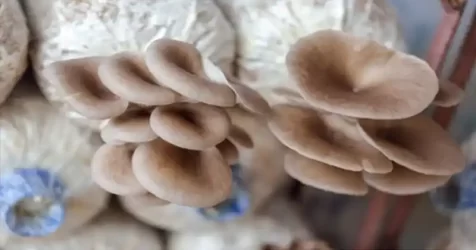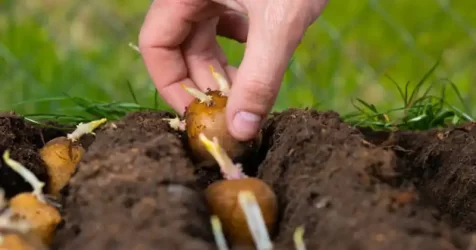5 Essential Tips for Bountiful Sweet Potato Harvests in Containers or Garden Beds
Growing sweet potatoes can be a delightful and rewarding venture for any gardener. Known for their nutritious tubers and versatility in the kitchen, sweet potatoes offer a bounty of benefits beyond their delicious taste. Here are five essential tips for maximizing your sweet potato yields, whether you’re planting in a single container or spreading out in a garden bed.
1. Mastering Propagation: The Root of Success

The journey to a bountiful harvest begins with successful propagation. Sweet potatoes are unique in that they can be grown from cuttings, which are known as slips. You can start these slips from a store-bought sweet potato or one from your previous harvest. Place a portion of the tuber in water, and soon it will sprout slips that can be planted. Alternatively, you can plant a whole tuber directly into the soil. This method is especially beneficial as it encourages strong root development from the start. Choosing the right variety is crucial—opt for those that match your climate and taste preferences. Whether it’s the classic orange-fleshed varieties or the exotic purple ones, each brings its own flavor and resilience to pests.
2. Strategic Planting: Location and Technique
Planting sweet potatoes requires a bit of strategy. First, consider dedicating a specific bed or container to them, as their vigorous growth can overshadow other plants. Sweet potatoes thrive in full sunlight but can tolerate partial shade, making them adaptable to various garden spots. In cooler climates, plant them after the last frost and give them as much warm growing time as possible. Utilize loose, well-draining soil rich in organic matter to encourage robust growth. Remember, while they’re hardy, sweet potatoes prefer not to compete for space and nutrients.
3. Soil and Fertilization: Laying the Groundwork
For sweet potatoes, the ideal soil is loose, crumbly, and rich in organic matter. Compacted or clay-heavy soils can hinder root development and lead to less than desirable harvests. Before planting, enrich your soil with compost or well-rotted manure to ensure it’s fertile and well-draining. However, be cautious with fertilization—too much can promote leaf growth at the expense of the tubers. A balanced approach encourages the plant to focus energy on producing large, healthy sweet potatoes.
4. Pest Management and Crop Rotation: Keeping Your Garden Healthy
Sweet potatoes are relatively resistant to pests, but vigilance is key to preventing losses. Keep an eye out for signs of rodents, insects, and diseases that might affect your crop. Employ crop rotation every two to three years to minimize soil-borne diseases and pests, such as nematodes and fungal infections. This practice not only helps in maintaining soil health but also ensures the sustainability of your sweet potato cultivation over the years.
5. Harvesting and Post-Harvest Care: Reaping the Rewards
The climax of your sweet potato growing journey is the harvest. Once the leaves begin to yellow and die back, it’s a signal that your sweet potatoes are ready. Harvest carefully to avoid damaging the tubers, using a fork to gently lift them from the soil. After harvesting, cure your sweet potatoes by leaving them in the sun for a few hours to heal any wounds, which helps in prolonging their storage life. Sweet potatoes can be stored for several months in a cool, dry place, ensuring you have a steady supply of this versatile vegetable.

In conclusion, growing sweet potatoes can be an enriching experience with the right knowledge and techniques. From propagation to harvest, each step plays a crucial role in achieving a successful yield. By following these five tips, gardeners can enjoy the sweet rewards of their labor—bountiful harvests of sweet potatoes ready for the kitchen. Happy gardening!



















